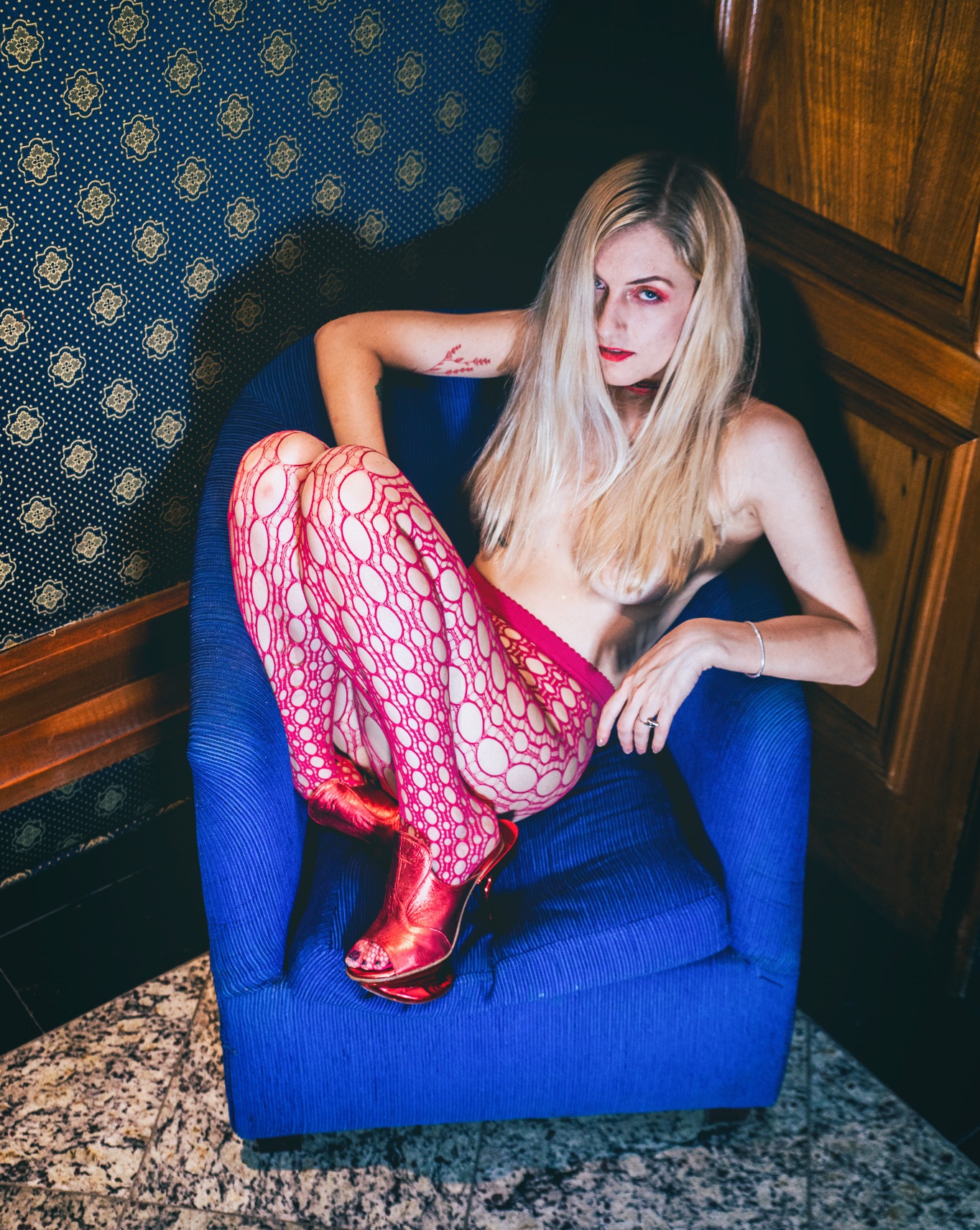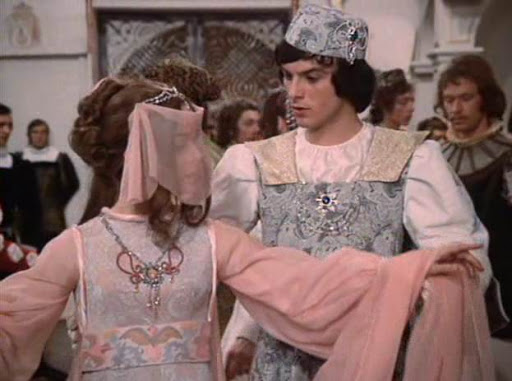Shoedaism: Cinderella heels regardless of gender
High heels in all sizes challenge the traditional perception of feminine footwear.
By Will Stroude
In partnership with Shoedaism
What is it about high heels? That is a question Karin Onderková from the Czech Republic still poses herself today. Out of a great passion, an inclusive footwear brand called Shoedaism was born.
It comprises what is traditionally regarded as feminine shoes in a variety of sizes from size 4 up to size 10. The current collection is called Cinderella, offering surprisingly comfortable to wear heels to everyone regardless of their gender.
A while ago a close friend of Karin was preparing to undergo an MTF gender confirmation surgery. As far as her friend could remember, she knew she wanted to become a woman despite being in the body of a young handsome boy. That is how Petr became Peta.
Trying to understand what her friend was going through Onderková watched a lot of documentaries and read an abundance of articles about the topic when one thing became clear to her. “You are born into your body, but it is up to you what you make of it. You become your persona through work and a little bit of magic.”
This influenced Onderková greatly and set off on a journey of making a collection in sizes 4 to 10 (Euro size 36 to 44). Onderková realized her friend’s body would change, but her feet would stay the same.
“It dawned on me how many people actually struggle to find heels in their size! And it is not only a question of transgender people, drag queens or crossdressers but also of cisgender women who just happen to have longer feet.”

(Photography: Lucas Gibson)
Onderková grew up in the nineties, between Moscow, Kyiv, and Prague, drawing designs throughout her teens. Eastern Europe was and still is very heteronormative. Watching MTV and Almodóvar movies or listening to Lady Gaga introduced a whole new world and inspiration. Dreaming of exotic fashion, the normal world sometimes felt grey.
After studying textiles she went for a student exchange in Jerusalem in 2014, where she discovered the world of footwear. Her brand, Shoedaism, started off a year later in Prague as an independent footwear design project, but it wasn’t until 2018 that her ideas fully materialized into creating a footwear brand for anyone who fancied high heels.
“Everyone around me was so practical in their footwear choices which could be described as down-to-earth. But just imagine stars attending Met Gala in flip-flops, a pole dancer in sneakers or a samba dancer in loafers!”
There are a lot of stereotypes around high heels. Some refer to heels as an instrument of torture invented to torment women. Well, guess what – high-heeled shoes were first used by men in Persia in the 15th century to help soldiers secure their feet in stirrups. Later on, Persian diplomats who traveled to Europe spread the fashion to the French court at the beginning of the 17th century.
Previously a part of men’s attire, the heels were adopted by women who wanted to masculinize their outfit. So arguably the heels change gender with different eras of fashion. High heels stayed a part of women’s outfit until the modern days. And that’s why also the slipper in Disney’s Cinderella is a high-heeled shoe.
But where does the Cinderella story come from? It is a story encrypted in our collective psyche but did you know the origins of this global fairy tale can be traced back to the 1st century in the Far East?
Small women’s feet were fetishized throughout history in the Far East where the Cinderella story originated. The Chinese fairy tale of Ye Xian is almost 2000 years old. The fairy tale about Cinderella tells a success story of a common girl who manages to tie the knot with a prince after years of hard work and mistreatment by her family.
Losing a small exquisite slipper on a ball the prince uses the slipper to find its owner and her ordeal is thus ended. Some sources imply the prince could be a foot fetishist, especially in the case of a glass slipper, but let’s leave that to scholars.
This story is the most famous fairy tale classic and the moral across cultures stays the same, only the agent of change – a fairy godmother, a spirit, or an animal, varies. In China, Ye Xian is helped by a fish and in Egypt, it is an eagle, a representation of Horus, in France, a fairy godmother is there to help and the Grimm Brothers present a white bird (unspecified) throwing a dress and slippers from a hazel tree.
A story similar to that of Cinderella is the story of Rhodopis recorded by Strabo. A Greek slave girl loses her sandal whilst bathing when an eagle snatches it and drops it in the lap of the king of Memphis. He is intrigued by the sandal and sends his men to find its owner according to its shoe size.
Centuries later, after print was introduced, the Cinderella tale spread in Italy in a book by Giambattista Basile, in France by Charles Perrault or the Grimm Brothers in Germany.
In the Grimm Brothers version of the fairy tale, one step-sister cut off her toe to fit inside Cinderella’s slipper, and the other cuts off a piece of her heel gambling on deceiving the prince into marrying one of them. The archetype of the story about a small pair of shoes probably influenced a practise called footbinding.
(Photography: Betina Polaroid)
Chinese young girls would have their feet bound from an early age to make them smaller, change their gait and it was said to strengthen women’s pelvic muscles. The feet that were bound from as young as 5 years old, later on reminded of a lotus flower petal, therefore they were called lotus feet.
The purpose of this foot modification was threefold, the feet would then be regarded as more feminine owing to their petite size, and secondly, the woman wouldn’t be able to walk or work effectively. This fact elevated her social status and she could marry somebody of a higher social rank than hers.
There you can apparently see a parable with Cinderella working in the household having a low status and later on she goes to a ball dressed to the nines in a fancy dress and a pair of glass or golden slippers.
Thirdly there was something provocative about feet that were hidden from the eyes do to their mutilation. Hiding feet catalysed the foot fetish by making them an object shrouded in secrecy.
Early in the 20th century, the practice of lotus feet was abandoned with the advance of Christianity (bringing western fashion to China) as well as communism (lotus feet were in contradiction to the working class needs) or feminism.
We can see pain being associated with women’s footwear: “A lot of women (88% according to a study carried out in 1993 in a survey by the American Orthopaedic Foot and Ankle Society) wear shoes that are smaller than their true size,” says Onderková who also gives her shoes extra padding to ensure comfort. At the same time, no one is forcing anyone into wearing high heels. It is a question of choice.
“Throughout the 20th century, the size of women’s as well as men’s foot size extended by 21%. We can ask ourselves what is the cute shoe size nowadays and whether we see other features as more attractive owing to that. So it is obvious that we have bigger feet nowadays.
“We should also acknowledge the fact that all fairytales are vieled in a heteronormative discourse that was added by centuries of men dominating literature in the times of when the folk tales were published, stripped off their sexuality.”
It took a lot of trust to build with the manufacturers to engage in such a project. Simply because the companies weren’t used to making shoes that were traditionally regarded as female in what they perceived as men’s sizes. Nevertheless, the designer had a strong belief that what she was doing might help a big number of people who don’t want to compromise design and quality of craftsmanship.
“At the same time it was a manifestation of support for the LGBTQ+ community. Despite the advocacy and awarness raising about gender in the media over the past 3 years, I strongly believe that at a time of crisis, these topics will be cast aside and it is important to sustain the discussion,” says Onderková.
“In the shape of the heel, I wanted to depict the abstract moment of transforming into a better version of yourself, which we can all relate to. The custom made heels in this collection are very important. Shoes are a magic object as in the Cinderella story. But magic moments like these are fleeting and you have to give them a good shot.
“Cinderella is given notice by the fairy Godmother that she has a short time frame for the soirée. In a hurry to get back home, Cinderella loses her slipper. Owing to the lost slipper, the prince reunites with his hot date. Well, it is good to have phone numbers these days.”

A fan of Pabllo Vittar, Onderková traveled to Brazil and stayed there for two months, attending drag queen shows wearing her statement heels anywhere possible, hoping to run into Vittar and contacting stylists just before the Covid-19 outbreak.
She met Ana Carolina Fernandes, an established photographer and reporter who was also dealing with the topic of Cinderella in one of her picture series. Ana Carolina held a reunion of PictoRio where Karin made friends with a talented Brazilian photographer Lucas Gibson whom she met at a reunion of PictoRio.
A photographer of nightlife, Lucas took pictures of numerous shows of drag queens and underground parties and guided her along the queer scene of Rio de Janeiro.
In the end, they worked together on photos of her shoes to commemorate her visit to a country that has the biggest LGBTQ+ community but at the same time struggles with acceptance of the minority in the eye of the general public.
Visit shoedaism.shop for more information and click here to buy. Follow Shoedaism on Instagram.
